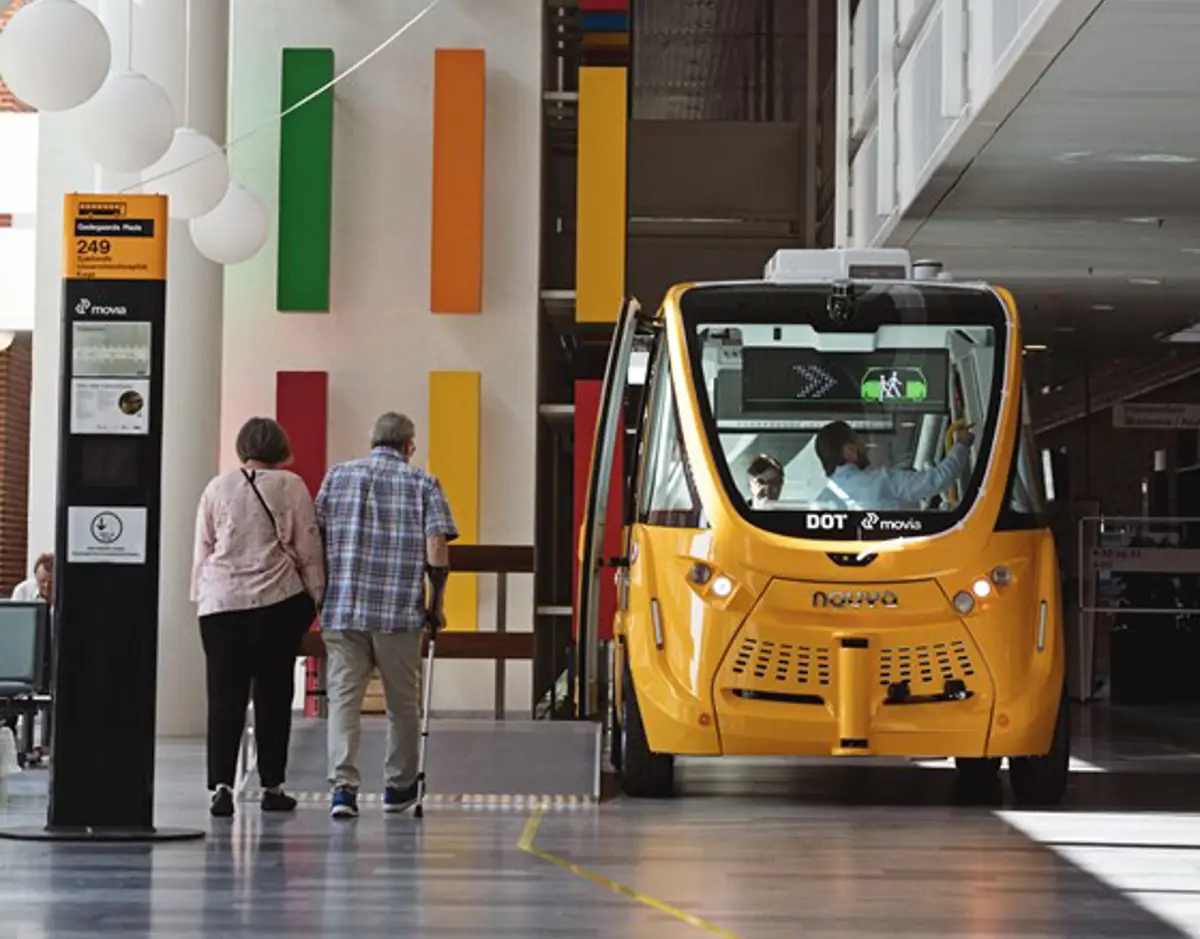
Denmark's first driverless bus in service was a passenger success
On 28 May 2018, the partners behind the trial, which consists of Region Zealand, the Capital Region of Denmark, Movia and Metroselskabet, inaugurated Denmark's first driverless bus in service at Zealand University Hospital, Køge. The bus ran for 65 days in the travelling hall, transporting 6,000 patients and relatives between outpatient clinics. It was the first in a series of three trials aimed at gathering experience on how driverless technology can provide more mobility for citizens. And the bus was a great success.
‘The first step towards driverless technology has clearly been a success. We have experienced great joy from our patients who have enjoyed using the bus for the past three months. Now we look forward to the next two steps in the process so that we can use our knowledge to strengthen the public transport of the future,’ says Heino Knudsen (S), Chairman of the Regional Council in Region Zealand
‘In the Capital Region of Denmark, we endeavour to be at the forefront of developments to reduce air and noise pollution and the increasing congestion on our roads. We know that we cannot invest our way out of the problem alone, as building new roads and railways is expensive and the road network will continue to be challenged - we must therefore think alternatively and make better use of the interconnected transport network to provide better services to our citizens and improve public transport. This is where this trial fits in, because driverless buses will eventually be an essential part of the solution and we are therefore pleased to be part of the trial,’ says Jens Mandrup (SF), Chairman of the Transport Committee
‘The trial has shown us that the citizens are unconcerned about the driverless bus and that there is confidence in the technology. The trial has also made it clear that in indoor areas with long distances, such as hospitals, there is an unmet need for transport that we can fulfil with driverless technology. We are therefore very excited to get started with the next phases of the trial and gain even more experience,’ says Dorthe Nøhr Pedersen, Chief Executive Officer (CEO) of Movia.
‘The driverless Metro has set new standards for public transport, and we are very keen to use our experience and technological knowledge to drive development forward. It must be attractive for passengers to travel by bus, train and Metro, and with driverless technology they will have completely new opportunities to travel from door to door,’ says Henrik Plougmann Olsen, Chief Executive Officer (CEO) of Metroselskabet.
The Zealand University Hospital is pleased that the driverless bus had its first run in Køge.
The bus has been of great benefit to patients and relatives during the trial period, and we see great potential in driverless technology in the hospital of the future
‘The first experiences with self-driving buses on Danish soil have been an unqualified success. We have shown how we can deliver value to patients, visitors and staff at a relatively low speed. Now we're preparing the next phase of the project where we're going to Slagelse and create better access to the hospital from the surrounding car parks. The collaboration with Movia, Metroselskabet and the Regions is an ideal setup to develop and test the transport solutions of the future, we look forward to continuing to learn together’ says Peter Sorgenfrei, CEO of Autonomous Mobility
Curious passengers confidently embrace the bus
Each day the bus carried up to 200 passengers, and both passengers and pedestrians were comfortable with the driverless technology they know from the Metro. Pedestrians trusted the bus to stop for them - and therefore walked very close to the bus.
The trial also showed a high level of curiosity. The bus had as many users with normal mobility as with reduced mobility - and as the bus travelled at low speed in the pedestrian area, the use of the bus was driven as much by desire as by an actual need for transport for some passengers.
The technology is not yet ready for large-scale operation
The bus operated safely throughout the trial, stopping for all pedestrians moving in front of it. At the same time, there were some limitations in the bus's technical capabilities because the bus operated indoors and could only run on image recognition and not GPS. The next two phases take place outdoors, where the bus can utilise its full technical capabilities. The parties are working together to make the bus technology even better for the next trial.
The trial at Zealand University Hospital, Køge, was the first in a series of three trials with driverless bus transport. The next trial is expected to start in early 2019 at Slagelse Hospital.